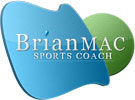

Injury Prevention
Rehabilitation of Common Runner's Foot Injuries
Dr Larry W. McDaniel, Callin Haar, and Matt Ihler discuss rehabilitating common foot injuries.
Whether you are a weekend warrior or a serious athlete, most runners fear the possibility of being injured. Feet are the primary method of participating in physical activities. For those who run, healthy feet are essential. Olympic-conditioned runners spend many hours performing foot maintenance to prevent unnecessary injuries. Common foot injuries are Plantar Fasciitis, Metatarsal Stress Fractures, blisters, Metatarsalgia, Morton's Syndrome, Turf Toe, and Sesamoiditis. This paper will provide suggestions on caring for common foot injuries properly in runners.
Plantar Fasciitis
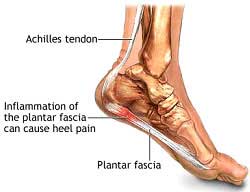 Plantar Fasciitis is characterised by pain in the inferior heel or the origin of the arch ligament when weight is placed on the foot. This inhibits the runners' ability to flex the foot because the pain is too great for the individual (Cole 2005)[2]. However, there are various methods to rehab this injury. The most critical issue for a quick recovery is decreasing the amount of swelling and inflammation in the joint. It may be done by reducing the amount of exercise and resting the injured foot (Cosca 2007)[3].
Plantar Fasciitis is characterised by pain in the inferior heel or the origin of the arch ligament when weight is placed on the foot. This inhibits the runners' ability to flex the foot because the pain is too great for the individual (Cole 2005)[2]. However, there are various methods to rehab this injury. The most critical issue for a quick recovery is decreasing the amount of swelling and inflammation in the joint. It may be done by reducing the amount of exercise and resting the injured foot (Cosca 2007)[3].
While the runners reduce the exercise, recovery may be expedited by placing the foot in ice or cold water. The individual may use anti-inflammatory medication to help reduce swelling in the injured foot. Anti-inflammatory medication may assist in the process of preventing injuries to the other foot (Plantar Fasciitis Rehabilitation 2008)[9]
Heel lifts should be used to prevent further damage to the foot. Since the runner developed Plantar Fasciitis in one foot, the other may be susceptible to injury. The injured person should stretch each foot by dorsiflexing both feet simultaneously. This process should be followed by alternating one foot at a time (Plantar Fasciitis Rehabilitation, 2008)[9].
The rehab therapy also includes plantar flexing of both feet using a towel to assist in stretching the Achilles tendon. Swimming, running in the water, or using a stationary bike is recommended to increase muscular strength and endurance in the injured area (Cole et al. 2005)[2].
The above-recommended exercises increase muscular activity in the foot and calf muscles.
Metatarsal Stress Fractures
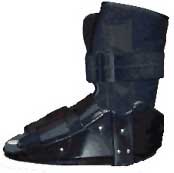 Metatarsal Stress Fractures are caused by overuse of the foot. Since this is a fracture of one of the metatarsal bones, walking or jogging will cause pain. The treatment for these injuries reduces the amount of activity and pressure on the injured foot. In some cases, crutches and wearing a protective boot will reduce stress on the metatarsals.
Metatarsal Stress Fractures are caused by overuse of the foot. Since this is a fracture of one of the metatarsal bones, walking or jogging will cause pain. The treatment for these injuries reduces the amount of activity and pressure on the injured foot. In some cases, crutches and wearing a protective boot will reduce stress on the metatarsals.
Biking is recommended to maintain strength and endurance in the lower body because it places less pressure on the metatarsal bones, and the increased blood flow may expedite healing. The healing process usually takes 3-12 weeks for the individual to recover fully.
Blisters
Blisters are generated by constant friction against the skin, which causes a fluid-filled pocket to form on the affected area. Blisters are the most common injury among runners, athletes, and others who exercise. Blisters are caused by shoes that are not built just for their feet but are mass-produced, and most people do not take the proper time to break in their boots correctly (Mitnick n.d.)[7].
In early blister formation, pain relief may occur by removing the shoe to allow the area to cool down. The runner may cover the area to help reduce the friction on the foot. Second skin, tape, and other forms of bandages may be applied to help protect the blister from worsening. (Mitnick n.d.)[7].
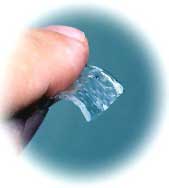 After forming a blister, the runner should decide if it makes walking painful. If the blister does not inhibit walking, it should be allowed to heal on its own, and the runner may use a form of second skin to help prevent the blister from worsening.
After forming a blister, the runner should decide if it makes walking painful. If the blister does not inhibit walking, it should be allowed to heal on its own, and the runner may use a form of second skin to help prevent the blister from worsening.
If the blister has reached a point where it hurts while walking and performing daily activities, it is recommended to puncture the blister and allow the excess fluid to drain (Mitnick n.d.)[7]. The runner should not remove the skin of the blister because, by doing so, the blister may become infected.
Metatarsalgia
The shape of your foot mainly causes Metatarsalgia. The foot that is cause of Metatarsalgia is unclear, but researchers and therapists know how to reduce the incidence of Metatarsalgia. This is an easy injury to treat as it is localised in the metatarsal joints that are inflamed and causing pain. Since this condition involves inflamed joints, the best advice would be to rest the foot, ice, and take pain medication that reduces inflammation (Cohen 2007)[1].
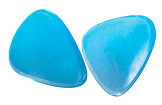 Other treatments to prevent Metatarsalgia from occurring are changing running shoes and increasing padding. Shoe inserts may also be used to relieve pressure on the metatarsals (Cohen 2007)[1].
Other treatments to prevent Metatarsalgia from occurring are changing running shoes and increasing padding. Shoe inserts may also be used to relieve pressure on the metatarsals (Cohen 2007)[1].
If foot discomfort persists, the patient may need to consult their local physical therapist for other options, such as an ultrasound, a form of deep heat, to help fight off the pain and inflammation.
Morton's Syndrome
Morton's Syndrome is the inflammation of a nerve found between the third and fourth metatarsals. It produces pain in the toes and causes an inability to move them. Treatment for this injury varies with the degree of severity. Rather than surgery, therapy involving experimentation with various modalities to assist in recovery is recommended. Surgery for Morton's Syndrome is the last resort.
Therapy techniques involve changing the type of shoe worn and increasing the padding on the injured area. The medical specialist may prescribe orthotic inserts to relieve pressure on the inflamed nerve (Morton's Neuroma 2008)[8].
Therapy may include icing the foot and taking non-steroidal anti-inflammatory drugs. These chemicals decrease swelling of the foot.
Turf Toe
Turf toe occurs when the great toe is severely hyper-extended. Turf Toe is a sprain of the Metatarsophalangeal joint. Therapy related to Turf Toe includes rest, ice on the injured foot, and the use of crutches to reduce pressure on the foot (Edell 2006a)[4]
Exercises that do not involve pressure on the injured toe may be performed if the individual's goal is to increase overall strength. Pressure on the wounded toe will cause more damage to the injury. Many experts recommend using an exercise bike to maintain stability and improve circulation in the injured area.
To relieve pain and allow the injured athlete to begin running, the toe may be strapped with tape to decrease flexion in the range of movement of the injured toe (Edell 2006b)[5].
Sesamoiditis
Sesamoiditis is an inflammation of the Sesamoid bones and related joints, which are located near the great toe. The injured runner will experience difficulty flexing or bending the great toe. The Sesamoid bones may be fractured (Sesamoid Fracture 2008)[10]. Surgery related to this type of injury is rare; however, surgery may be the primary method to expedite recovery in some cases.
To reduce pain and inflammation in the Great Toe, rest the foot, take over-the-counter pain medication, and apply ice to the injured area. During recovery, wear shoes with low heels and extra padding (Sesamoid Fracture 2008) Aucouturier.
Sesamoiditis injuries may significantly impact runners. Rest and ice may be the most important therapeutic modalities. Tape is often used to immobilize the Great Toe, which may decrease recovery time.
After reading this article, runners will recognize typical runner's injuries and seek proper care.
Runner's Foot Injuries
Select this link to read the article where the authors discuss typical runners', foot injuries.
References
- COHEN, J. (2007). Metatarsalgia - Causes, Symptoms, and Treatment Methods. In ArticleBASE Technologies, LLC
- COLE, C. et al. (2005). Plantar Fasciitis: Evidence-Based Review of Diagnosis and Therapy. American Family Physician, 72(11), 2237-2243
- COSCA, D. (2007). Common Problems in Endurance Athletes. American Family Physician, 76(2), 237-246
- EDELL, D. (2006a, April 6). Turf Toe, The Athletic Advisor
- EDELL, D. (2006b, June 4). Turf Toe Taping, The Athletic Advisor
- Metatarsal Stress Fracture. (2005, November), Merck & Co., Inc.
- MITNICK, M. (n.d.). How to Treat a Foot Blister. In WikiHow - The How-to Manual
- Morton's Neuroma. (2008). In Healthy Feet for an Active Life - FootPhysicians.com
- Plantar Fasciitis Rehabilitation. (2008). In UPMC Sports Medicine, University of Pittsburgh Medical Center, Pittsburgh, PA, USA
- Sesamoid Fracture and Sesamoiditis. (2008). In IHealthSpot
- Relief to Sesamoiditis [Photograph found in Aetrex Worldwide, Inc.]
- Second Skin [Photograph found in Relags]
- Plantar Fasciitis [Photograph found in U.S. National Library of Medicine, Bethesda, MD]
- Aids for Metarsalgia [Photograph found in Try Care]
Page Reference
If you quote information from this page in your work, then the reference for this page is:
- McDANIEL, L. et al. (2009). Rehabilitation of Common Runners' Foot Injuries [WWW] Available from: https://www.brianmac.co.uk/articles/article049.htm [Accessed
About the Authors
Dr Larry McDaniel is an associate professor and advisor for the Exercise Science program at Dakota State University, Madison, SD, USA. He is a former All-American in football and a Hall of Fame athlete & coach.
Matt Ihler and Callin Haar are students enrolled in Exercise Science at Dakota State University. Both are interested in careers related to Sports Medicine.